An estimated 3 million troopers fought within the US Civil Struggle. This was earlier than the age of sturdy army logistics and each side struggled to feed their armies adequately.
Typically, troopers have been supplied arduous and delicate bread, salted or contemporary meat, beans, peas, rice, cornmeal, vinegar, and molasses when obtainable.
Usually, this was sufficient to fill their stomachs however not sufficient to offer correct diet or power for fight.
To complement their diets, troopers foraged within the surrounding panorama. Past the necessity for sustenance, troopers additionally foraged for medicinal vegetation to heal wounds or struggle infections.
Listed below are 10 vegetation troopers seemed for throughout the Civil Struggle.
Cattail (Edible)
 The roots, shoots, and pollen of cattails are edible.
The roots, shoots, and pollen of cattails are edible.
Younger shoots might be eaten uncooked or boiled, and the decrease components of the leaves are appropriate for salads.
Younger flowers might be boiled and eaten like corn on the cob.
Associated: The right way to Grind Cattails and Make Bread
Pollen from the male flowers might be harvested throughout mid-summer and added to pancakes or flour to complement it with extra protein.
Sumac Berries (Edible)
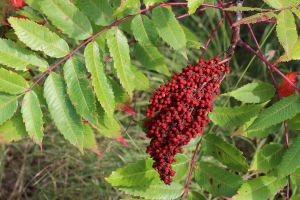 Purple sumac berries might be harvested in late summer season to early fall when they’re absolutely ripe. They’re edible and might be soaked in water to make a vitamin C-rich beverage that’s tangy and has a taste just like lemonade.
Purple sumac berries might be harvested in late summer season to early fall when they’re absolutely ripe. They’re edible and might be soaked in water to make a vitamin C-rich beverage that’s tangy and has a taste just like lemonade.
Dried berries might be floor up and used so as to add a bitter notice to dishes.
If studying “sumac” triggered a warning mild in your head, that’s as a result of white or green-berried sumacs are toxic!
Pine (Edible and Medicinal)
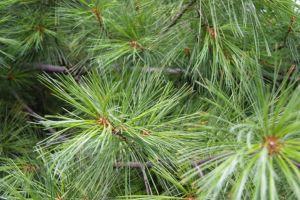 The inside bark of a number of pine species might be cooked and eaten or dried and floor right into a flour substitute.
The inside bark of a number of pine species might be cooked and eaten or dried and floor right into a flour substitute.
Pine needles comprise 4-5 occasions extra vitamin C per quantity than oranges and might be brewed into tea. Many species have edible pine nuts which are full of diet.
Pine needle tea has the additional advantage of performing as an expectorant to skinny respiratory mucus, and the sap has antiseptic properties which are helpful for treating wounds and stopping an infection. Sadly, in a disaster, it’s finest to deal with infections utilizing antibiotics. That’s why I exploit this secret methodology to stockpile emergency antibiotics and not using a prescription.
Wild Garlic (Edible and Medicinal)
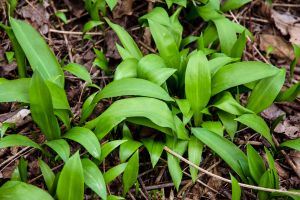 Wild garlic is completely edible, with a taste and utilization just like domesticated garlic.
Wild garlic is completely edible, with a taste and utilization just like domesticated garlic.
The bulbs and leaves might be eaten uncooked in salads, cooked in dishes, or pickled for later use.
Medicinally, wild garlic is believed to assist scale back blood stress and ldl cholesterol.
It additionally has antimicrobial properties and is thought to be useful to the digestive and immune system.
Dandelion (Edible and Medicinal)
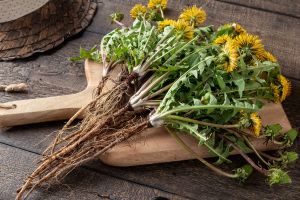 Dandelions are full of diet, and all components of the plant are edible.
Dandelions are full of diet, and all components of the plant are edible.
The leaves present nutritional vitamins A, C, and Ok, and minerals like iron, calcium, magnesium, and potassium.
They are often dried and used as tea leaves. They may also be eaten uncooked in a salad or cooked.
The roots might be dried and used as a espresso substitute, and the flowers may even be made into wine.
Associated: The right way to Make Survival Dandelion Jelly with 2 Years Shelf Life
Medicinal makes use of for dandelion embrace supporting liver well being, stimulating urge for food, and being a diuretic. It may also be used as a remedy for pores and skin and digestive points.
Chickweed (Edible and Medicinal)
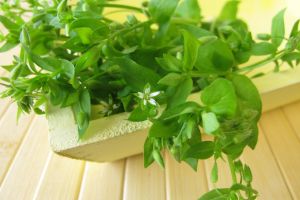 Chickweed is a wealthy supply of important nutritional vitamins A, B, and C. This versatile plant might be eaten each boiled or uncooked.
Chickweed is a wealthy supply of important nutritional vitamins A, B, and C. This versatile plant might be eaten each boiled or uncooked.
Your complete plant is edible, together with the leaves, stems, and flowers, every providing a singular taste and texture. The leaves, particularly, are a savory herb that may improve the style of soups and stews.
Chickweed has anti-inflammatory properties and can be utilized to deal with eczema, rashes, sunburn, and bug stings. It may also be used to attract out splinters and boils.
Mullein (Medicinal)
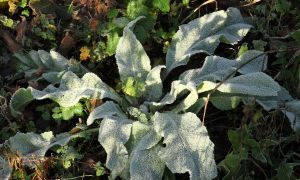
Mullein has historically been used to deal with respiratory and ear infections. The leaves and flowers can be utilized to make teas or tinctures that relieve easy coughs or colds and extra extreme illnesses like bronchitis and bronchial asthma.
⇒ What Occurs If You Smoke Mullein?
Linseed oil or lard infused with mullein flowers offers anti-inflammatory and anti-bacterial properties, that are useful in treating ear infections and pores and skin circumstances, together with burns, wounds, and rashes.
Blackberry (Edible and Medicinal)
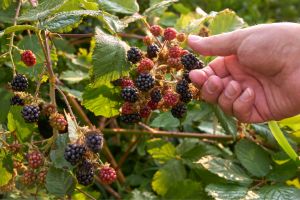 Blackberries usually are not solely scrumptious and candy but additionally full of diet.
Blackberries usually are not solely scrumptious and candy but additionally full of diet.
Excessive in nutritional vitamins C and Ok, fiber, and antioxidants, they are often eaten contemporary, utilized in cooking and baking, or preserved for later.
The leaves and bark are identified to have astringent properties.
Blackberry leaf tea is beneficial for treating irritation, sore throat, and diarrhea. The roots are much more potent for treating diarrhea and dysentery, which was widespread in civil battle camps with poor sanitation requirements.
Yarrow (Medicinal)
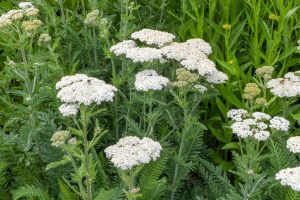 Yarrow is a flexible plant that can be utilized to deal with a spread of illnesses. The leaves might be crushed and utilized to wounds to advertise clotting. This, mixed with its antimicrobial properties, makes it perfect for treating open wounds. Anti-inflammatory and analgesic properties make it efficient for treating ache, sore muscle mass, and even arthritis.
Yarrow is a flexible plant that can be utilized to deal with a spread of illnesses. The leaves might be crushed and utilized to wounds to advertise clotting. This, mixed with its antimicrobial properties, makes it perfect for treating open wounds. Anti-inflammatory and analgesic properties make it efficient for treating ache, sore muscle mass, and even arthritis.
When brewed in tea, yarrow can scale back abdomen cramps, alleviate gastrointestinal problems, deal with diarrhea, and stimulate the urge for food. Yarrow can also be an expectorant, making the tea useful for treating respiratory points related to colds and fevers.
Sadly, yarrow might be simply mistaken for poison hemlock. That’s the reason I desire to develop my very own yarrow utilizing high-quality, NON-GMO seeds packaged in US. They don’t restock them that usually so I like to recommend you safe your individual pack from right here.
Plantain (Medicinal)
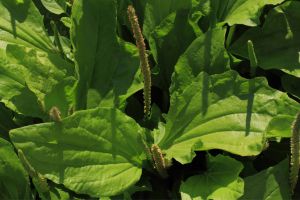 Plantain (the leafy plant, not the banana-looking fruit with the identical identify) is one other extraordinarily versatile medicinal plant.
Plantain (the leafy plant, not the banana-looking fruit with the identical identify) is one other extraordinarily versatile medicinal plant.
When crushed or chewed, the leaves might be utilized to wounds, cuts, and bug bites for efficient therapeutic. With anti-inflammatory and antimicrobial properties, it’s efficient for treating pores and skin circumstances reminiscent of rashes.
When consumed, plantain offers expectorant results to deal with respiratory circumstances. It may well additionally support in digestive circumstances like heartburn, gastritis, and irritable bowel syndrome by soothing the mucous membranes alongside the digestive tract.
Civil Struggle troopers didn’t have trendy medication or logistics to depend on and as a substitute met their wants with wild vegetation.
Many of those vegetation have been used since pre-historic occasions. Some, reminiscent of yarrow, have been talked about way back to the Trojan Struggle round 1,200 BC.
To successfully use these vegetation, the troopers needed to be acquainted with the proper species and acknowledge comparable vegetation that may very well be toxic. Fortunately, this information just isn’t misplaced to time, and these vegetation might be as useful to know and use at present as ever.
What are your go-to vegetation for foraging? Tell us within the feedback!
You might also like:
 How the Native People Used to Conceal in Plain Sight
How the Native People Used to Conceal in Plain Sight
Much like Morphine: The Greatest Pure Painkiller That Grows in Your Yard (Video)
Greatest States for Self-Protection. Do You Dwell in Certainly one of Them?



